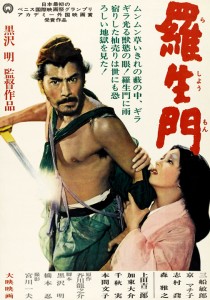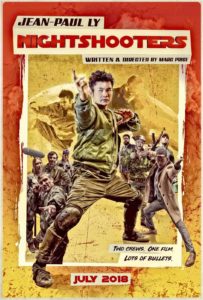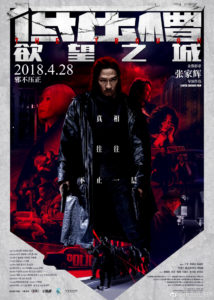Director: Joseph Merhi
Cast: Gary Daniels, Kenneth Tigar, Fiona Hutchison, Jillian McWhirter, Peter Jason, Mark Metcalf, Tim Colceri, Ramon Sison, David Powledge, Judith-Marie Bergan
Running Time: 95 min.
By Paul Bramhall
Call me gullible, but when a movie comes with a tagline like “Somewhere between sanity and madness….there is RAGE”, you have me sold. Such is the case for the 1995 Gary Daniels vehicle Rage. Despite the bold tagline, there can be no denying that the 90’s DTV action genre in the States was a precarious minefield to navigate. The bastard genre spawned from the unholy pairing of Jean Claude Van Damme and Steven Seagal’s unexpected popularity as box office draws, it was PM Entertainment that stepped up to the table in the 90’s, one which was once presided over by Cannon Films. While Cannon dealt with their own financial woes and dwindling star roster, it was PM Entertainment that moved in to fill the void, filling the video shelves with movies that guaranteed explosions, car chases, and roundhouse kicks to the face.
British martial artist Gary Daniels became one of PM Entertainment’s go-to leading men during their tenure as the kings of DTV action. After working on various Philippines shot DTV movies (and even worse – Don ‘The Dragon’ Wilson flicks), Daniels initially secured bit parts in a couple of PM productions, before receiving co-star billing in 1993’s Firepower (the same year he’d visit Hong Kong to fight Jackie Chan in City Hunter). Rage would pair Daniels with one of PM Entertainment’s top directors in the form of Joseph Merhi. At this point Merhi had already helmed two of what many fans consider to be PM’s crowning achievements, with Zero Tolerance and Last Man Standing (the Jeff Wincott flick, not the Bruce Willis one), so to see the British high kicker collaborate with the resident action maestro was a thrilling prospect.
The plot of Rage is a masterpiece in itself. Daniels plays a 2nd grade school teacher, adorned with the largest shoulder pads ever put onscreen, and as proceedings open we’re introduced to him lecturing a classroom of enthusiastic kids about monkeys (and serial killer Jeffrey Dahmer). Daniels is an all-round nice guy, and to emphasise it even more we get to listen to his rendition of ‘The Wheels on the Bus’ while driving his daughter to her friends place. No sooner has he dropped her off however, when a pistol wielding Mexican jumps into his car, and holds him at gunpoint to act as a getaway driver from the pursuing cops. While the chase soon comes to an end, rather than being concerned for his well-being, Daniels ends up being pistol whipped by the cops, and taken to a top-secret government facility that’s using illegal migrants as guinea pigs to create a human super soldier.
Impressed at Daniels’ physique, the crooked cops and shady government agents decide he’s the ideal candidate to experiment on, and are soon injecting him with chemical concoctions intended to turn him into the ultimate human weapon. However they didn’t bank on him waking up, and soon Daniels is kicking the living daylights out of everyone in sight (while wearing a straitjacket), mowing people down with a machine gun in each hand, and withstanding cattle prods being thrust into his crotch. All of the above happens in just the first 10 minutes of Rage, leaving the remaining 80 as basically a non-stop chase flick, with Daniels being pursued by crooked cops, government officials, and a pair of journalists who want to know the truth.
Whatever Merhi was thinking when he started the cameras rolling on Rage, coherency definitely didn’t come into it, and frankly it’s all the better for it. Rage is simply 95 minutes of bombastic action, ridiculous plotting, and hilarious mise-en-scène. When Daniels is first taken to the secret facility, he witnesses other humans being experimented on, lying motionless in glass casing (the go-to storage option for human experiments in any movie). I’d assumed this was foreshadowing for what would eventually lead to a good super soldier vs bad super soldier finale, however the facility or any of the other human experiments are never seen again. We’re also left to assume that Daniels sudden adeptness at kicking people in the face, and knowledge of how to fire a machine gun (one in each hand!), is a result of the injections, and not part of the training he was given to be a 2nd grade school teacher.
It gets better though. My personal favorite is a scene in which the bare chested Daniels is captured and taken to be disposed of, and in the next scene when the bad guys open the trunk of the vehicle he’s been stuffed into, he’s fully dressed. You gotta love bad guys who are so considerate that, regardless of if you’re being taken to be thrown off a cliff, they put your clothes back on before doing so. Rage is at its most random when Daniels goes to visit an old sensei who lives on a boat, played by Filipino actor Ramon Sison, and the pair start conversing in a mix of English and (un-subtitled) Tagalog. Why does an elementary school teacher know a Filipino sensei that lives on a boat, and when did he learn to speak Tagalog!? It’s almost as if parts of Rage were being made up as they went along, and really, that’s ok.
The reason why it’s ok is mainly down to one thing – the action. Merhi, together with fight choreographer Art Camacho (before he became known for directing dross like Half Past Dead 2) and stunt coordinator Spiro Razatos (who most recently worked on Venom) are clearly having a blast with whatever budget they had at their disposal. There’s a wonderfully long vehicular chase scene, which has Daniels behind the wheel of a tanker, one that incorporates a gleeful amount of collateral damage against any cars standing in its path (plus who doesn’t love cars that explode on impact!?). I’d go so far to say that echoes of much of the stunt work on display in Rage, can be seen in some of the most popular mainstream action movies of the last 20 years.
The climax of the chase scene is more than a little reminiscent of the climax to the epic car chase from The Matrix Reloaded (just minus any CGI and a flying Keanu Reeves). Another scene has Daniels (well, his stunt double) dangling off a building with the rope of a window washing outrigger, which he uses to run across the buildings side to create enough momentum to launch himself towards a….well, I won’t spoil it for anyone who’s yet to see it. But the same concept would be used 16 years later when Tom Cruise would scale the Burj Khalifa in Mission Impossible: Ghost Protocol. Of course that’s not to say Rage is always original when it comes to the action, with a finale that clearly tips its hat to Jackie Chan’s Police Story, locating all of the key players to a shopping mall that’s fitted out with at least as much breakable glass as the movie which inspired it.
Ironically the 2 reporters are perhaps more current in their mission today than they were in 1995. To coin the American Dialect Society’s 2017 Word of the Year, they’re on a mission to get the truth behind the ‘fake news’ (yeah it’s actually 2 words), and see if Daniels really is the psychopathic killer the media is portraying him as. Hilariously, the finale kicks off by Daniels being interviewed by the pair in the middle of the mall, which is then rudely interrupted by heavily armed men in black sent to take Daniels out. Rage deserves points for its unique approach to dramatic build-up. The sequence segues into a satisfyingly lengthy barrage of fists, feet, and bullets, with the occasionally surreal sight of shoppers going about their day to day lives spotted in the background. Try not to smile when the action smashes through a VHS store, its walls covered in posters for other PM Entertainment titles (a smart, if not so subtle marketing move).
Today factors like piracy and access to CGI effects (no matter how cheap they may look) have largely made DTV movies like Rage a thing of the past, but thankfully they can still be enjoyed in retrospect, and there’s plenty there to enjoy. With references to O.J. Simpson, a fight against a towering dominatrix and her pan wielding submissive, and a matching denim love making scene, there’s not a minute that goes by in Rage in which it feels like it wants to do anything other than entertain the audience watching it. Entertain it does, with a performance from Gary Daniels that cements him as the most lethal 2nd grade school teacher to ever grace the screen. Yes, even when he’s singing ‘The Wheels on the Bus’.
Paul Bramhall’s Rating: 8.5/10







 While I can definitively say that Jackie Chan introduced me to Hong Kong/Chinese cinema and that
While I can definitively say that Jackie Chan introduced me to Hong Kong/Chinese cinema and that 








 As a young kid of 18, I used to watch a British Television film review programme, then presented by Johnathan Ross. A major advocate of Eastern cinema, Ross is a larger than life character with an abundance of knowledge of especially Asian action movies. At the end of one programme there was a clip of the South Korean film
As a young kid of 18, I used to watch a British Television film review programme, then presented by Johnathan Ross. A major advocate of Eastern cinema, Ross is a larger than life character with an abundance of knowledge of especially Asian action movies. At the end of one programme there was a clip of the South Korean film 









7 Comments